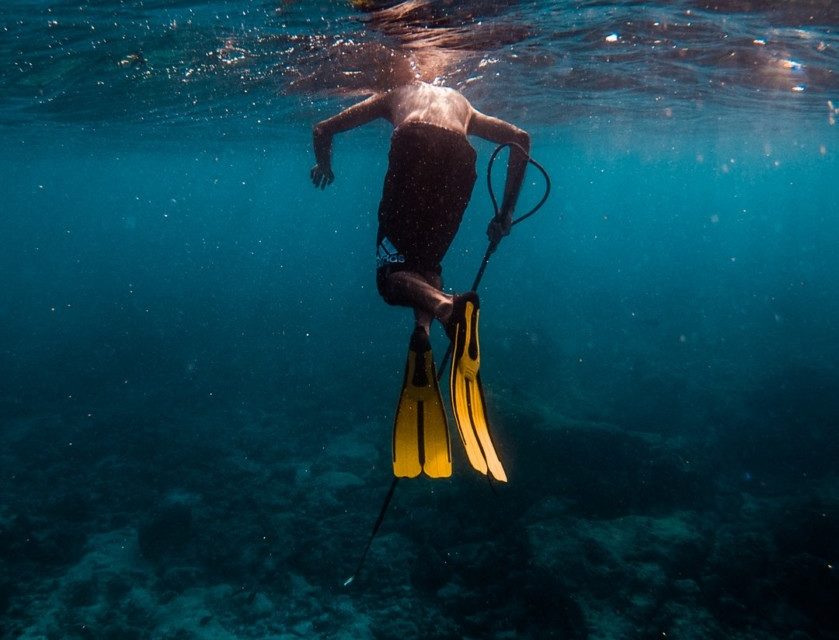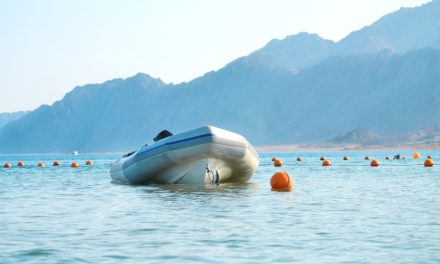Are you in the advanced learning stages of spearfishing? If so, read on to learn about the top ten advanced spearfishing techniques.
When it comes to outdoor sports, there are few activities more exciting than spearfishing. This is a sport that requires skill and strategy and lots of practice. Becoming an expert isn’t easy.
To become a skilled spearo (person who likes spearfishing) it takes time to learn the best spearfishing techniques. It’s not easy, but the effort is certainly worth it, if you’ve ever dreamed of going on an aquatic adventure.
Let’s take a look at some of the tips you’ll need to know before booking your trip for an island getaway.
Top 10 Advanced Spearfishing Techniques
Diving Tips
1. Surface Diving
The vast majority of your time spearfishing will be spent hunting from the surface of the water or in the shallows. You might be tempted to want to dive deeper, but diving burns lots of energy, and you’ll be amazed at how much you can see cruising at the surface.
Keep in mind that your freediving mask will limit your view. Thus it’s important to imagine your head on a pivot and thus be constantly looking in all directions at all times.
Looking down from the surface will give you a more expansive view of the water, but will also have an impact on how you aim your spear. This can be tricky, but your proficiency with the spear will increase with time and practice.
2. Mid-Water Level Diving
Mid-level dives tend to be at depths of around 10 to 20 feet. Remember, this type of diving requires more energy and thus will take a toll on your body. You will only be able to dive for as long as you can hold a single breath of air.
Typically each mid-level dive will last about a minute, or perhaps a little more, depending on your lung capacity. Ideally, you’ll want to recover for about the same amount of time before taking the next dive. We encourage you to dive with a buddy. This way your partner can watch as you dive to make sure you’re safe.
This diving technique is ideal for when there is kelp in the area where you are hunting, or when visibility is limited because of water conditions.
Just remember that kelp is your friend. There has been many a dive in Carmel when conditions have been less than ideal…mostly a little rough or when a swell comes up. Grab that kelp and hold on. At times it can be your best friend. When scuba diving or free diving and if you happen to come up in a kelp bed or need to swim through it, relax and float on top of that kelp and gently push the kelp away…some would call it a kelp crawl. Plus, fish love kelp!
3. Bottom Diving
Diving to the bottom and waiting for fish to swim toward you can be fun, but is also very challenging. Depending on the depth of the water, this spearfishing technique often requires tremendous lung capacity.
Keep in mind that being on the bottom, close to the fish, increases the odds of spooking the fish. Thus it’s not only a more physical challenge due to lack of air, it also challenges you to be a more stealthy hunter.
When diving at the bottom, try to blend into your surroundings as much as possible. Be aware that any movement at all can scare your game. Therefore it’s important to remain still, moving only when absolutely necessary.
Stalking and Shooting
4. Stalking in Dirty Water
Many people often assume that fishing in dirty water is easy because the fish can’t see you as well. The reality is that fish in dirtier water actually tend to spook easier than fish in clear water.
Think about it for a moment. Wouldn’t you be more cautious of your surroundings if you can’t see clearly? It’s no different with fish.
5. Stalking in Rough Water
Hunting fish while swimming in rough water is another challenge. Even if you’re at the surface, water is likely to splash into your snorkel, making it difficult to breathe.
Swimming in rough, choppy water also increases the odds of getting seasick. Your body will rise and fall with the waves, and not everyone can tolerate this kind of motion. Thus your time in the water may be limited by the queasiness of your stomach.
6. Make Sure You Have the Right Gear
Stop for a moment and think about the gear you will be using to hunt fish. If you are hunting bigger fish, you’re going to need a big enough speargun to handle the job.
As with traditional fishing, all gear is not the same. You need the appropriate gear for the game that you’re chasing. A smart diver will be outfitted with the proper speargun, reel, and floatline so that your equipment doesn’t get lost and you don’t wind up in a vulnerable situation while out in the water.
Key Tips for Being Quiet
7. Stay Relaxed and Limit Movement
Fish are amazingly perceptive creatures. They will spook at even the smallest sound or movement. This makes it nearly impossible to get very close to them. Yet there are a few strategies you can use for getting as close as possible.
First, try to stay relaxed. The tension in your body works against you in a couple of ways. It uses up precious energy and it affects the way you move in the water. The more relaxed you can be, the more harmonious you’ll be with your surroundings.
Next, eliminate any source of bubbles. This includes bubbles that get trapped in your wetsuit and snorkel. Some people go so far as to put holes in the hood of their suit to allow the bubbles to vent. And go ahead and remove your snorkel before your dive. This prevents bubbles from escaping that might alert nearby fish of your presence.
How to Use Your Pole Spear
It should go without saying that your spear or speargun is your primary source of equipment. We encourage you to resist the impulse to buy the cheapest one available. Many people opt for a spear over a speargun because it’s cheaper, and that’s fine, just get a good one. Click here if you would like to read our beginners guide to using a pole spear.
Now let’s discuss some general rules about how to use the pole spear.
8. How to Hold and Throw the Spear
The spear is essentially an extension of your arm. Thus it’s going to shoot where you point it. It’s vital that you hold your arm steady during release, otherwise your aim will be thrown off.
Gently extend your non-shooting arm at your side. This is an effective way to maintain balance while aiming.
Some spearos believe that twisting the pole a quarter turn while loading the band helps the shaft to not flex.
Another piece of equipment to keep in mind is your weight belt. You’ll need this when using a pole spear. Because you need to get close to the fish, and a weight belt helps you stay under rather than burning energy struggling to stay beneath the surface.
It can also be helpful to watch spearfishing videos online.
9. Practice Your Aim on Floating Objects, Not Fish
Practice makes perfect, right? It’s true. The more practice you can get, the more skilled you’ll be at aiming. But be smart about it.
Many people use empty water bottles or some other type of object that will float for target practice. You can practice shooting at anything, really. Even shells on the bottom of the ocean.
This kind of practice is great for becoming comfortable in your surroundings. When new to the sport, you’ll quickly discover how challenging is can be stabilizing yourself in the water while trying to aim with any amount of accuracy.
Just try to resist the impulse to practice your aim on anything living. After all, there are plenty of creatures in the sea that are happily cruising along, and there’s no reason to harm them. But if you do decide to practice on fish, make sure they are legal size.
10. Treat Your Elbow with Care
When first starting out, you’ll quickly discover just how strenuous it can be reloading the heavy band time after time. And trying to do this in the water can be even more difficult. The reloading process requires a lot of energy and can take a toll on your arms.
This strain can be especially hard on your elbow. People often damage their elbow joint because of the repetition and thus require surgery and or rehab.
The best thing you can do is simply stay in shape. Find exercises you can do at home that will strengthen your arms, and specifically target your elbow. Because the better conditioned you are before you get into the water, the smoother your spearfishing experience will ultimately be.
Becoming Skilled at Spearfishing
Spending time in the ocean is one of the great experiences of life. After all, the oceans of our planet are filled with endless wonder and an incredibly diverse variety of life.
Spearfishing is a fantastic way to experience this aquatic universe. Every year more and more people are discovering this exciting sport. And the key to success is mastering the spearfishing techniques discussed here.
When starting out, take your time. Learn the basics. Practice. Become familiar with your spearfishing gear so that using it will be second nature by the time you’re in the water looking for fish.
Click here to see a list of the top 10 spearfishing destinations around the world.




![How to Set Up Your Spearfishing Weight Belt Correctly [With Top Recommendations]](https://spearoscout.com/wp-content/uploads/2019/06/malta-spearfishing-440x264.jpeg)

